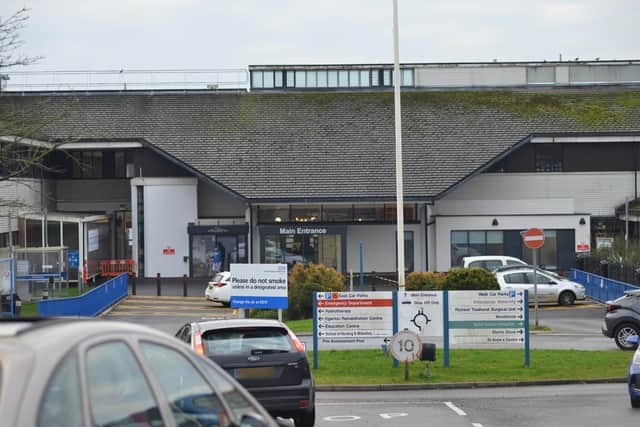Moving some cardiology services from Conquest Hospital in Hastings to Eastbourne will not be called in
and live on Freeview channel 276
On Thursday (December 15), the East Sussex Health Overview and Scrutiny Committee (HOSC) confirmed it would not call in an NHS decision to consolidate the county’s catheterisation laboratories (or cath labs) at Eastbourne District General Hospital.
Cath labs offer specialist cardiology services, such as angiograms, angioplasties and pacemaker implantations.
Advertisement
Hide AdAdvertisement
Hide AdThe change will affect approximately 1,500 patients each year, those being patients who would have previously accessed the service at Conquest Hospital in Hastings. This, the NHS says, would amount to around three per cent of patients who use cardiology services in East Sussex.


While HOSC ultimately signed-off on the plans, some members clearly had concerns about the additional travel time for patients needing urgent, life-saving treatment.
Responding to these concerns, cardiology consultant professor Nick Patel said: “We’re talking about the heart attack-monitored, patients who need urgent treatment in a very quick period of time. Putting the numbers in context, that is around 190 patients a year.
“At the present time those patients do travel to either site out-of-hours — one week in Eastbourne, one week in Conquest. It doesn’t matter whether in Eastbourne or in Conquest, our national target times fit well within the 80 per cent threshold for our door-to-balloon time.”
Advertisement
Hide AdAdvertisement
Hide AdFor context, the national target times for door-to-balloon — a measurement which refers to a device which helps keep a heart pumping blood — is 90 minutes from arrival at an A&E or 150 minutes from a patient’s call for help.
This answer failed to satisfy Hastings councillor Sorrell Marlow-Eastwood (Con), however, who said: “The roads are empty out-of-hours, so having to go further makes no difference, depending on which way the ambulance is coming from. I don’t really think that is a concern.
“It is when it is busy, when we’ve got lots of tourists, when the roads are chockablock — that’s when the issues are.”
Prof Patel said the same figures also applied to in-hours treatment, saying the patients are already being taken to one site or another for angioplasties.
Advertisement
Hide AdAdvertisement
Hide AdSimilar concerns were raised by Mike Turner (Lab), another Hastings councillor. He said: “What my concerns are here is health inequality. That theme runs right through the report on reducing health inequalities.
“How do feel that moving a patient from Hastings to Eastbourne, having to travel from the most deprived borough in all of the county, how’s that going to reduce health inequality?”
Prof Patel said: “Access to treatment and access to investigation, which is normally around diagnostics, will be available on both sites for our patients.”
Prof Patel went on to say that the changes would improve the service as a whole, allowing it to better meet national standards.
Advertisement
Hide AdAdvertisement
Hide AdDespite the cath lab consolidation, other parts of the cardiology service — such as outpatients, non-invasive diagnostics, cardiac-monitored beds, cardiac rehabilitation and heart failure services — will continue to be available at both sites.
The NHS also plans to create emergency cardiac response teams at both hospitals, which would run alongside consultant-led ‘hot clinics’.
Described as ‘front door’ services, the NHS says these changes would significantly reduce waiting times for people attending A&E with chest pains or other symptoms of a heart condition.